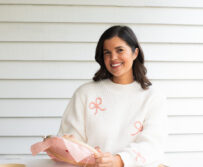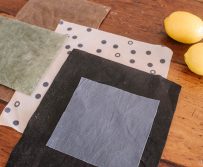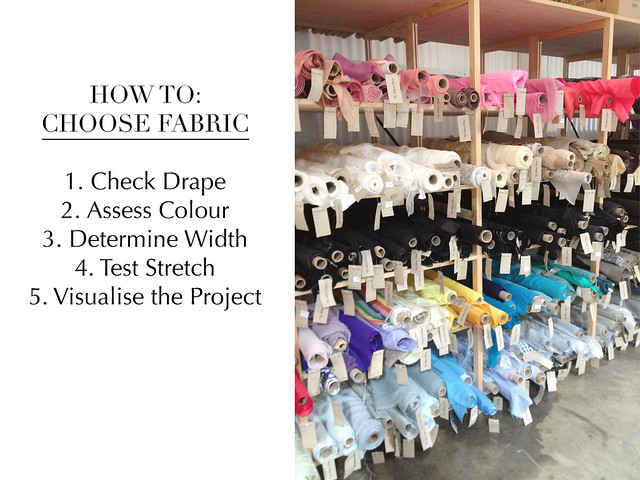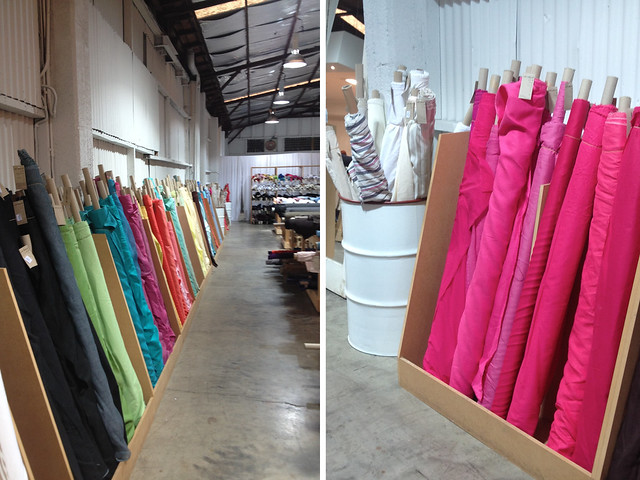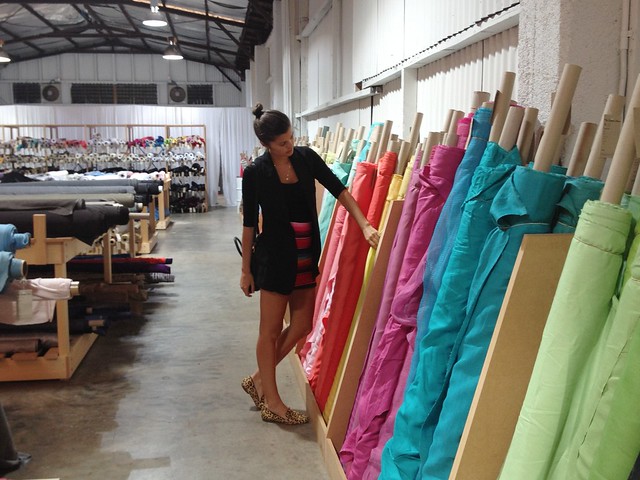Have you ever noticed how much a type of fabric impacts the look and feel of a piece of clothing? Although I’m not a professional sewer, the cumulative hours I’ve spent in fabric markets has taught me a few things about how to pick the best fabric for a project. Read on for a few key tips for buying fabrics for your sewing projects.
Choosing Fabric
1. Check Drape: Always unroll the fabric a few yards and see how it hangs. The hang or ‘drape’ of the fabric will be a key element in terms of how the garment looks on. Notice how silk hangs softly, while linens are more heavy with a tendency to stick out when pleated or gathered? For me, the drape of the fabric is the most important factor in what your project will end up looking like. I never would have been able to make this wrap dress project out of a linen or thick cotton fabric, and this mini skirt would have looked odd in a silk or chiffon. When in doubt, think of items of clothing you own or have seen in stores – when you see circle skirts, what fabric are they most commonly made in? What about mini shorts? This will help you decide what fabric to buy.
2. Assess Colour: Colours and patterns are key to the look of a project. If buying in a shop my advice is to always take the fabric into natural light prior to purchasing. Often the lighting in a store can make a colour look different to how it looks in natural light – I once purchased fabric thinking it was khaki and it turned out to be tree green! The flourescent lights in the Guangzhou markets completely altered the look. Also, make sure to hold up the fabric to your skin to check how it looks against you if you are making something for yourself.
3. Determine Width: Fabrics usually come in two or three different widths – 60 inches (150cm) or 45 inches (112.5cm) being most common, and the width of your fabric will determine how much you will need to buy.
4. Test Stretch: Pull the fabric between your fingers to test the stretch. Most fabrics will have an element of stretch, particularly when pulled on the cross (diagonal against the grain), and this will be useful to understand. Think twice before purchasing lycra or jersey fabric unless you know how to sew stretch – this can be a little more challenging.
5. Visualise Project: Finally, always take the time to visualise what the project will look like in a given fabric. Think about the colour and drape – will the dress you want to make look good in a light silk fabric, or would it be better in a heavy linen? Think about your own shape too – heavier fabrics tend to be more forgiving on the figure than light silks – particularly in the case of simple sewing projects with limited structure.
Other tips? If you are just starting out, go for natural fabrics like cotton and linen that won’t be too slippery and will handle well. Also, when you get your fabric home, it is often a good idea to wash your fabric to make sure it doesn’t shrink drastically – which often happens to wool and other such fabrics. Overbuy fabric if you think it may shrink so that you have enough fabric to work with. And don’t be afraid to buy non-traditional fabrics for your projects – rugs, table runners and sofa fabrics can work if you use them in the right projects.
Pics taken here.

